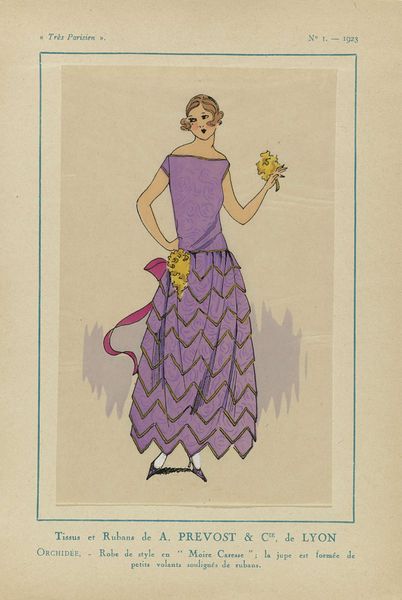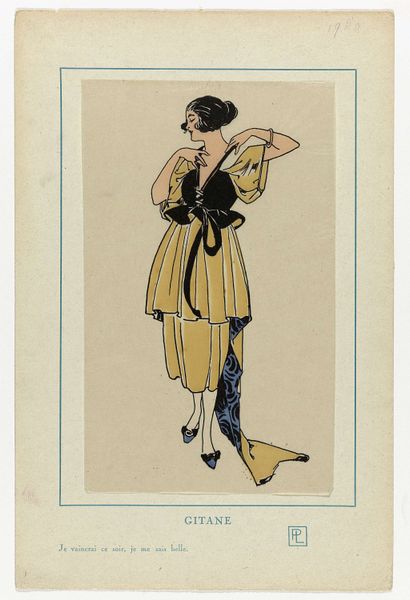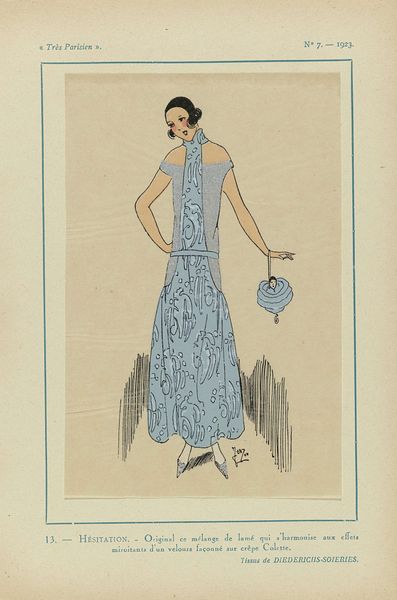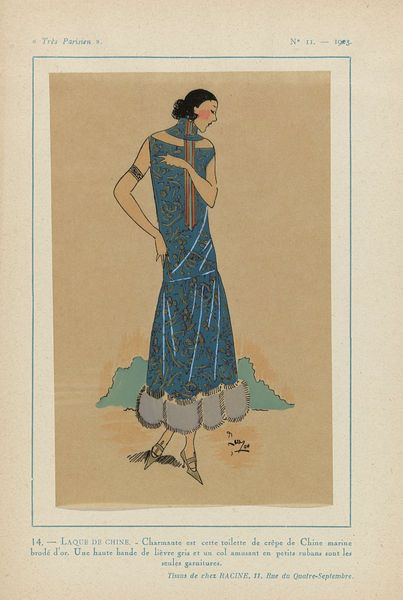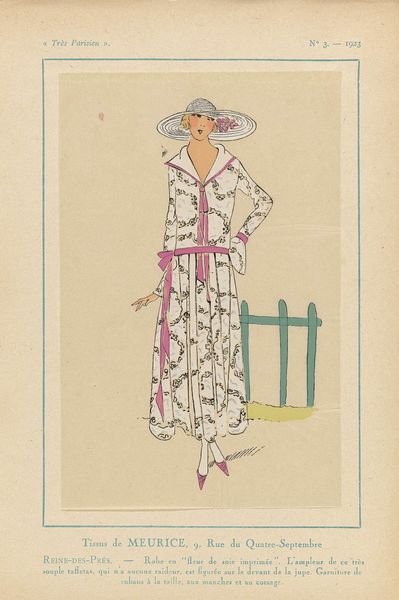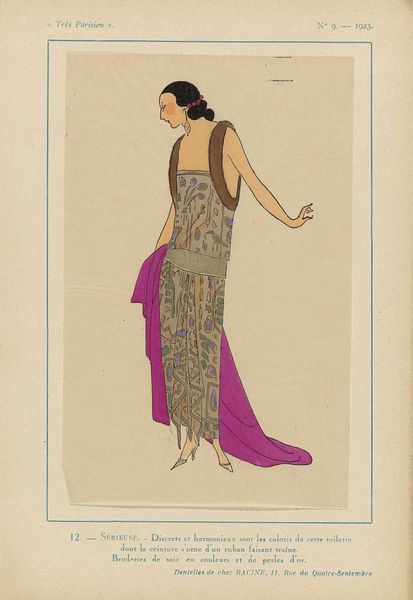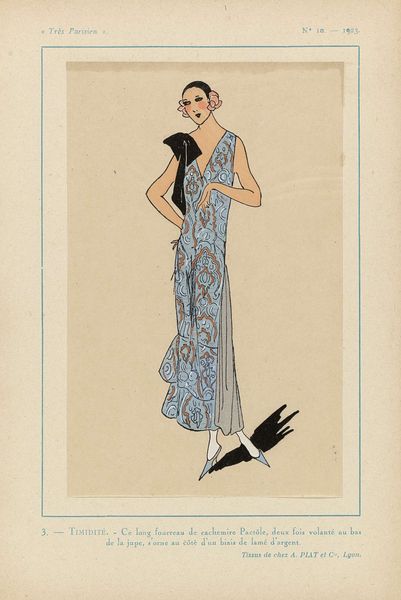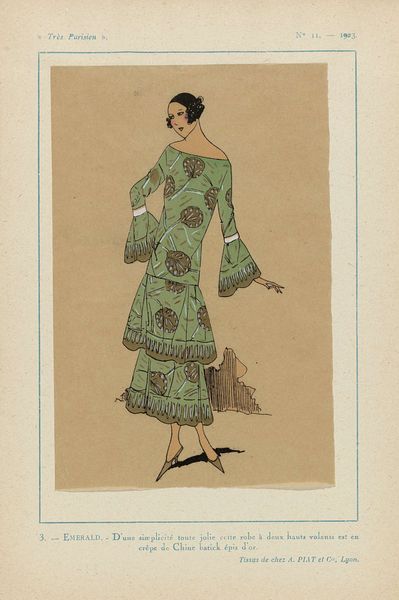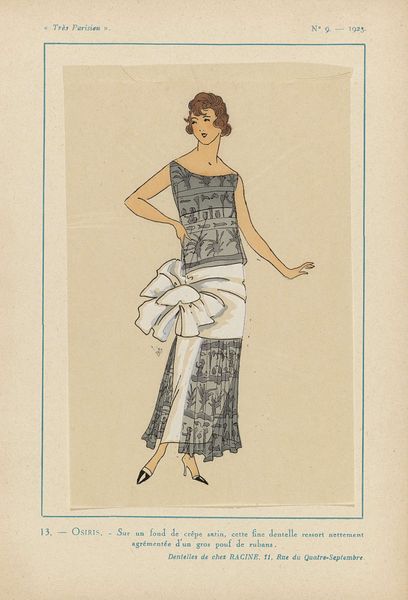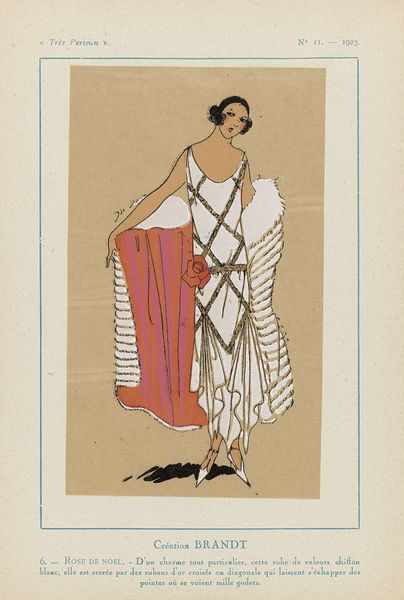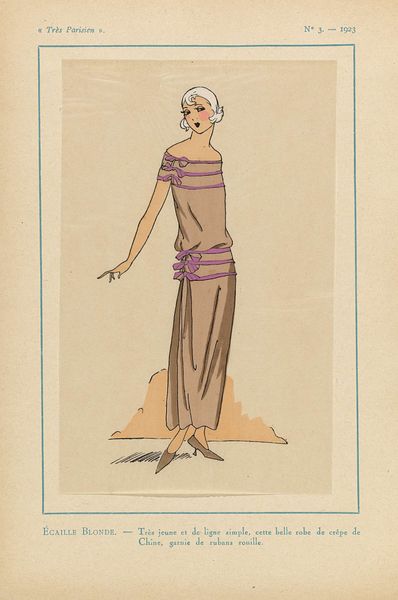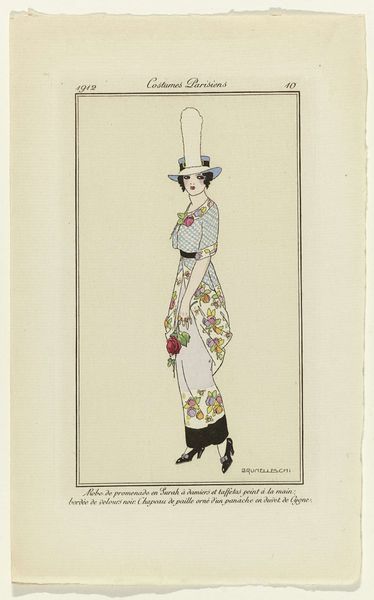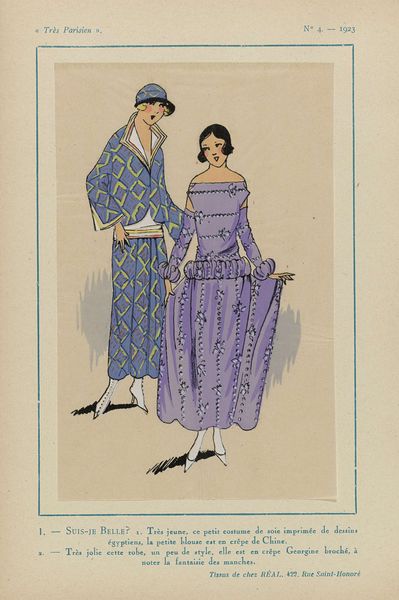
Très Parisien, 1923, No 9: 16.- ÉCLATANTE. - Ravissante robe en moire... 1923
0:00
0:00
drawing, print, paper, ink
#
portrait
#
art-deco
#
drawing
# print
#
figuration
#
paper
#
historical fashion
#
ink
#
watercolour illustration
#
decorative-art
#
dress
#
watercolor
Dimensions: height 269 mm, width 180 mm
Copyright: Rijks Museum: Open Domain
Editor: This delightful image, “Très Parisien, 1923, No 9: 16.- ECLATANTE. - Ravissante robe en moire...” by an anonymous artist, uses ink, watercolor, and printmaking techniques on paper. It’s wonderfully Art Deco and has a real lightness to it, a feeling of fashionable frivolity. What social commentary, if any, can we draw from this work? Curator: It’s tempting to see it solely as a charming period piece, but it speaks volumes about the socio-economic landscape of the 1920s. Fashion plates like this one weren’t just about aesthetics; they were powerful tools of cultural dissemination. Consider who consumed these images: primarily affluent women aspiring to a certain Parisian ideal. This print subtly reinforces a class structure. Editor: So it’s not *just* fashion; it’s about access and aspiration? The text mentions 'ravishing dress in metal moire'. Curator: Exactly! Think about the industrial advancements allowing for mass production of such textiles and images. And the name dropping, 'Dorure Louis MATHIEU,' underscores the brand-name culture taking root. Does the model’s pose and gaze towards the top right connote accessibility or does it present an ideal beyond reach for most? Editor: I see your point. It is selling a dream, or the *idea* of one. The gaze presents access but perhaps it really is far off into the future. Curator: Indeed. The image participates in the creation of desires that feed into a specific economic engine, constructing and reinforcing ideals of femininity and wealth through the visual language of fashion. It promotes social structures but also elevates some women in society. It is also in a museum now for everyone, democratizing the aspiration in a way. What do you think? Editor: It's fascinating how a seemingly simple fashion plate becomes a mirror reflecting complex social dynamics. Museums play a crucial role by placing artworks in the public sphere and providing critical commentary, which democratizes interpretation, shifting meanings. Curator: Precisely! Seeing art within a historical context illuminates the forces shaping both its creation and our understanding of it today. The socio-political and public consumption angle has altered my perception of art history a bit, so I'm appreciative.
Comments
No comments
Be the first to comment and join the conversation on the ultimate creative platform.
